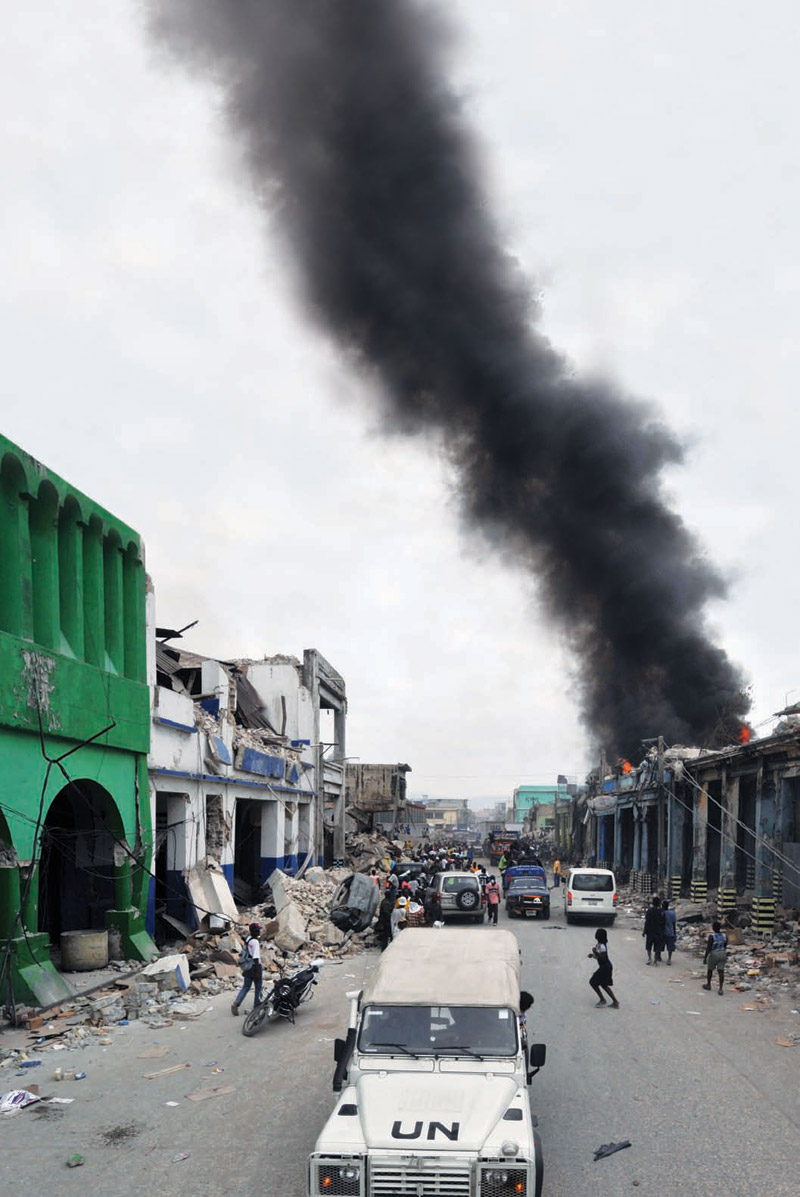The Fist of Destruction
Deciphering the causes behind earthquake fatalities

Can this staggering difference in death tolls be attributed solely to the relative poverty in Haiti, where poorly-constructed structures collapsed killing thousands, and insufficient resources hampered the disaster response, killing legions more?
"Not true," says CIRES Fellow Roger Bilham. Poverty is only one of five factors—the "five fingers in the fist of destruction," Bilham calls them—that affect the number of casualties suffered in a major earthquake. While poverty and its evil twin ignorance —meaning inhabitants and even governments often don't know how to prepare for potential earthquakes—play their part, in 2010 Bilham and Nicholas Ambraseys of Imperial College in London uncovered one previously unidentified culprit in earthquake fatalities: corruption in the building industry.
Corruption in this sector frequently takes the form of corner-cutting on materials, poor building practices as well as bribes to subvert inspection, Bilham said. "The question is: how to prove it?"
While the impacts of poverty and corruption are highly similar, the scientists attempted to tease apart the influence of both "fingers" on earthquake death tolls. The first stage of their analysis compared the data on a country's relative wealth with a Corruption Perceptions Index (CPI)—a measure of the frequency and extent of bribes paid within various countries compiled by Transparency International—a global civic society based in Berlin. The scientists found a direct correlation between the two variables. "What this says is that if a country is rich, it is not generally corrupt; if it is poor, it is very corrupt," Bilham said.
Some anomalies did exist to this simple relationship, however. Italy, Turkey and Haiti were more corrupt than they "should" be on the basis of their wealth, whereas India, New Zealand and China were less corrupt than expected.
To determine how many earthquake deaths due to building collapses happened in the anomalously corrupt countries, the researchers then analyzed all the compiled earthquake fatality data for the last 30 years. Their finding was staggering: 83 percent of the earthquake deaths occurred in the "more corrupt than expected" nations. "That is not exactly proving anything, but it is a solid result," Bilham said.
While corruption primarily impacts those living in cities, the fourth "finger of destruction" impacts those living in rural communities, Bilham said. In most nations, engineers build structures in the civic centers with full knowledge of earthquake preparedness, Bilham said. But the villages don't hear anything about it. "We know how to build for earthquakes but we don't get the message to the people who need it—the guy who is going to die in the earthquake," he said.
For the fifth finger—the opposing thumb in the problem of global earthquake fatalities—Bilham points at seismologists themselves.
Certain limitations in data and accepted practices can make assessing the potential for earthquakes in a region difficult. Researchers, for example, cannot determine the history of earthquakes in regions where there is no historical record, and since some earthquakes happen well below the earth's surface, "traditional methods of estimating seismic activity are inadequate," Bilham said,"and geodetic methods for assessing the strain rates in earthquakes zones can be misleading".
Before the 8.0 Chengdu earthquake, for instance, which killed 68,000 people in 2008, the stresses measured in the earth's crust—the strain rate—were only three times more than those currently measured in Colorado.
Could this mean a magnitude 8.0 earthquake could happen in Colorado?
It is not implausible, Bilham said. "If an earthquake happened tomorrow, people would do these calculations and say, 'We should have seen this coming.'"
"In this fist of destruction, there are all these factors," Bilham said. "But the biggest one is the danger of seismologists being too conservative in a region where they don't have sufficient information to say, 'You cannot have an earthquake.'"
Haiti, 2010:
Magnitude 7 earthquake,
death toll – 230,000
New Zealand 2010:
Magnitude 7 earthquake,
death toll – 0


